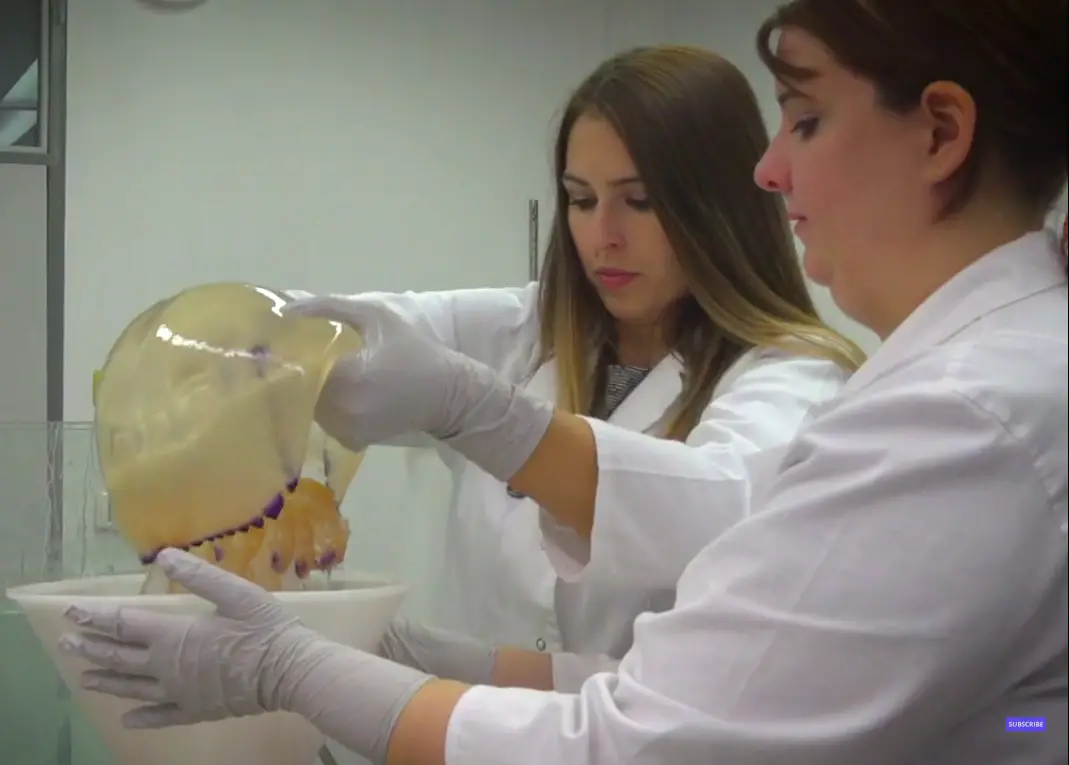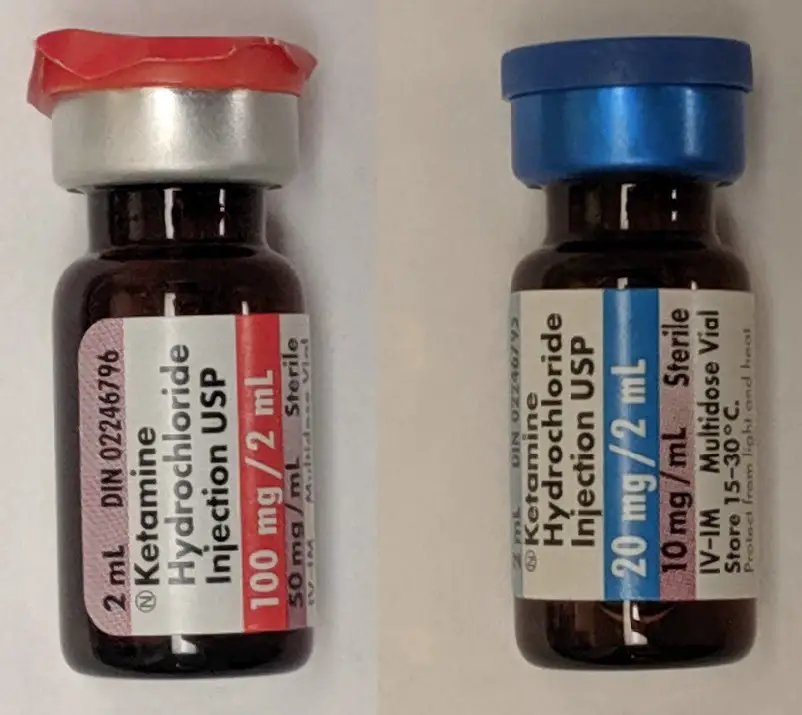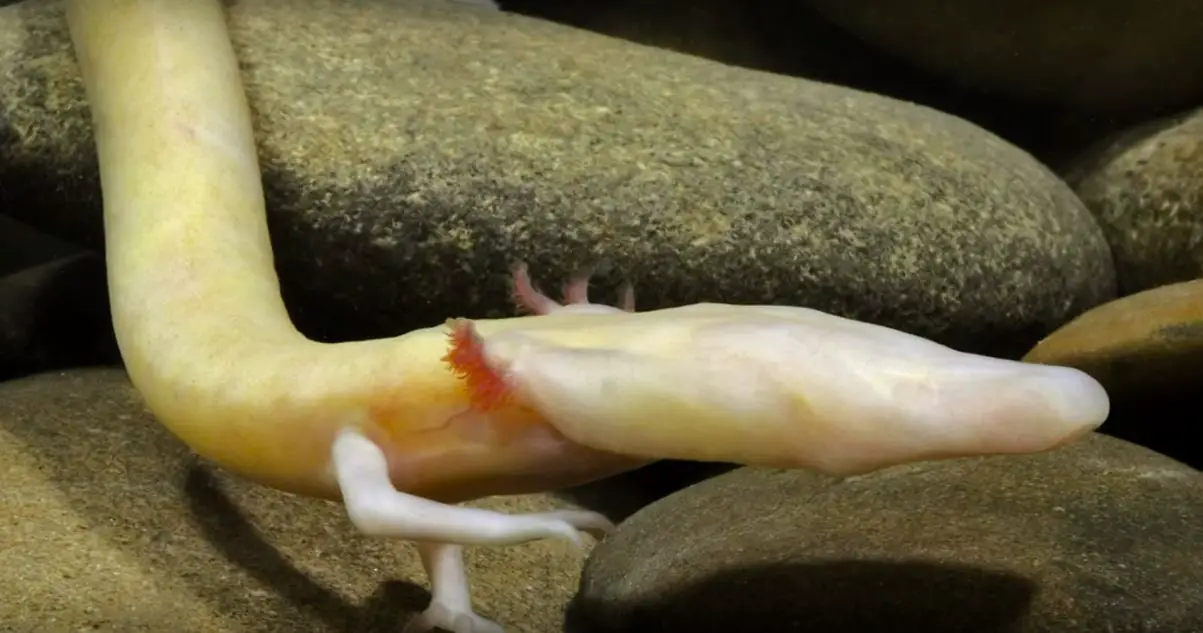Made in Slovenia
Two key figures in the current Covid-19 crisis are the number of ventilators and number of people in an ICU beds with the virus. According to government figures, Slovenia currently has 168 of the former and 11 of the latter (see updates here, along with data on cases, hospitalisations, deaths and recoveries).
Since new ventilators will difficult, if not impossible, to buy off-the-shelf needed, about two weeks ago the Association for Electrical Engineering and Electronics at the Chamber of Commerce and Industry (GZS) and SRIP Factories of the Future started an initiative to develop a Slovenian ventilator, to meet demand, if needed.
The good news is that on Sunday the first prototypes of the new devices were turned on. While not yet ready for use, the work continues to develop models that are safe and reliable for local hospitals. According to a government press release, the work is being done by groups of engineers from several (unnamed) international companies and UKC Ljubljana hospital doctors, coordinated by the Technology Park, the GZS, the Jožef Stefan Institute and the Ljubljana Faculty of Electrical Engineering.
All our stories on coronavirus and Slovenia are here
STA, 6 March 2020 - Slovenia will get a new biotechnological centre on the western outskirts of Ljubljana near the Faculty of Chemistry and Chemical Technology. The contract on the launch of the EUR 21 million project was signed on Friday.
As part of the project, which will be one of the biggest investments in biotechnology in the region, a new 6,500-square-metre research centre is to be built by 2023.
The contract on the construction of the Biotechnological Hub of the National Institute for Biology (NIB) worth almost EUR 20.8 million was signed today by Education, Science and Sports Minister Jernej Pikalo and NIB head Matjaž Kuntner.
The EU will contribute EUR 16 million, the state will chip in EUR 4 million, while the rest will be covered by the NIB.
According to Kuntner, the construction should start at the end of this or the beginning of next year.
The two-storey building with a multitude of labs, lecture rooms, conference rooms, offices, and technical and maintenance rooms will be located in Večna Pot street in the east of Ljubljana, near three other faculties.
Minister Jernej Pikalo noted that the funding of science and research was on the rise, but that Slovenia was still lagging behind in this respect and that one project would not make up for everything.
This investment is a small step towards creating better conditions for science and research, he said.
According to Kuntner, the new centre will strengthen Slovenia's excellence in science on the international level, stop brain-drain, introduce new biotechnologies and enhance ties with the business sector and tertiary education as well as various public institutes and science centres.
The Miha Artnak, the prolific Ljubljana graffiti artists, designer and prankster, has once again struck a nerve with his latest project. After last year's street action, in which he crossed the road illegally as a statement of artistic freedom, he recently started a new project in which he artfully places trash in public spaces in an attempt to make people more mindful about their pollution, launching it last month in Abu Dhabi.
As an article in The Guadrain writes:
“I want you to pollute the same way as you do every day. Just make it more visible,” he told me via Skype while drinking from a plastic water bottle through a straw. “It’s important to be mindful about your pollution, to be present in the moment,” he added, “that way you show how much you care.”
The action, which has seen others around the world join in by making artful messes of their own, is called “Pollutism” and is of a piece with Artnak’s earlier high profile projects, such as his paintings made from pigeon droppings and attempt, somewhat successful, to rebrand BTC City as Bitcoin City.
Miha Artnak gets some attention from the authorities during an earlier street intervention
In addition to his attention grabbing stunts, Miha is also a member of the ZEK crew, co-founder of the creative centre Poligon, and a managing director of the design studio Ljudje, which has produced work for, among others, the Museum of Architecture & Design, Klub K4, Flaviar Inc, and Gramatik, and most recently did the visual identity for the 26th Biennial of Design in Ljubljana, BIO 26. You can keep up with Miha’s work here, and with that of the ljudje / people design studio here.
There’s growing awareness that plastic waste is a problem, and the use of single-use plastics, such as water bottles, is becoming increasingly unacceptable. One Slovenian project that’s stepping into this space to try and address part of the problem is myWater. The Vrhnika-based team have developed water fountains with a difference – they’re designed to refill bottles, and thus encourage people to carry their own containers and reuse them.
The dispensers are free to use and connected to the local water supply, bringing the convenience of home to the street. The innovation is aimed at the European market, and especially the Mediterranean region, along with Africa and Asia. Anywhere there’s a need for clean drinking water in public, with the myWater system using filtration technology to remove all pollutants before it reaches your bottle, including microbes, microplastics and harmful chemicals.
“We’ve been told that our fountain produces clean fresh tasting water that is better than bottled mineral water” said Robert Slavec, CEO of myWater and father of the inventor, Aljaz Slavec, who created the first prototype while still in high school. Together they are trying to deal with the impact that single use plastic water bottles have on the environment.

Aljaz and Robert Slavec with a water ATM at the ChangeNOW summit in Paris
While the dispenser has been shown internationally, to especially good reception at the ChangeNOW summit for change held in Paris last month, since autumn 2019 one pilot of myWater dispenser has been installed in Slovenia. That’s in Koper Municipality on the Semedela promenade, with the hope being that it can reduce the number of single-use plastic bottles thrown away by visitors and locals. The goal is to serve local water and within one year to reduce single-use plastic bottle waste by 100,000 units. The dispenser is made of Slovenian wood with a hole in the shape of a water drop to insert your bottle.
The next goal of myWater is to have its water dispensers at this summer’s World Expo in Dubai, while the firm is also working on a project to help places that aren’t connected to the water supply. With this, myWater aims to condense water vapour from the air and then clean it, so it’s good enough to drink.
You can learn more about myWater on the website, and also nominate the next city to have a myWater dispenser.
Slovenia luxury fashion designer Matea Benedetti spent the Oscar week in Los Angeles. At a Red Carpet Green Dress Pre-Oscars gala on February 6, Benedetti presented her creation designed to introduce for the first time a newly developed luxurious organic textile by Tencel™, which according to the manufacturer Lenzing is fully biodegradable and can return to nature in 8 to 12 weeks.
Red Carpet Green Dress is a global initiative showcasing sustainable fashion on the red carpet at the Oscars, established in 2009 by Amis Cameron, the partner of the director James Cameron (of The Terminator, Terminator 2, Aliens, Titanic, Avatar, and so on)

Slovenian designer Matea Benedetti (centre) with film director James Cameron (left) and vice-president of the Lenzing global market, Harold Weghorst
STA, 13 February 2020 - Slovenian researchers were a part of an international team that has made a breakthrough discovery in thyroid gland research. Together with researchers from the UK and Germany, they have determined the entire structure of human thyroglobulin, the protein precursor of thyroid hormones, for the first time.
The results of the study into the protein that is essential for the growth and development of thyroid hormones will have a significant impact on the treatment of thyroid gland disorders, the Jožef Stefan Institute (IJS) said in a press release on Thursday.
Using cryo-electron microscopy, the researchers from the IJS and the Centre of Excellence for Integrated Approaches in Chemistry and Biology of Proteins, Dušan Turk, Ajda Taler-Verčič and Miha Renko, cooperated with researchers from Cambridge, Berlin and Bristol to identify the full-length structure of thyroglobulin for the first time.
The results of their study were presented in the scientific journal Nature.
Thyroglobulin is the protein that is used to create the T3 and T4 hormones in the thyroid gland. The two hormones regulate energy consumption of human cells and aside from thyroglobulin they are the only molecules in the human body that contain iodine.
Iodine is thus a key element for proper development and functioning of the human organism and thyroglobulin enables its storage for periods when the body is not receiving it in sufficient quantities.
The functioning of the thyroid gland is well researched, which helps control functional disorders, but up until now it was not clear how hormones are actually created in the gland.
Human thyroglobulin is a giant molecule consisting of two chains of 2,768 and 5,536 amino acids, respectively.
The structure of thyroglobulin determined by cryo-electron microscopy has revealed that the molecule has only seven spots where hormones are created.
Each molecule is formed from two amino acids called tyrosine. The newly created hormones are extracted by enzymes, protease, through decomposition of thyroglobulin into amino acids.
The article on the full-length structure of thyroglobulin is a result of almost twenty-year work and a revolution in cryo-electron microscopy, IJS said in the press release.
STA, 7 February 2020 - Two women from Koroška region have set a new world record in endurance crocheting. They managed to crochet for 28 hours non-stop, beating the previous record by a full four hours.
Anita Kac and Jadranka Smiljić started crocheting at 8am on Thursday and persisted until midday on Friday, having gone through 4.5 kilo or roughly 13 kilometres of wool, Zdravko Kac, the husband of one of the crocheters, told the STA.
Kac, who has been doing crochet for over 40 years, was working on hats, scarves, headbands and a blanket, while Smiljić, who turned 40 on Thursday, tackled the coat-of-arms of Slovenj Gradec municipality.
But due to the complexity of the design and fatigue, she abandoned the coat-of-arms in the middle of the night to tackle simpler projects.
Their record is not official yet, with the Guinness Book of World Records expected to take about a month to examine all the evidence of their endeavour.
The previous record is held by an Englishwoman, Natalie Morrison, who crocheted non-stop for 24 hours in 2019 to raise funds for charity.
STA, 4 February 2020 - The University of Maribor and its Medical Centre (UKC) have teamed up with partners from abroad to launch an EU-funded project to provide an AI-assisted post-treatment support to cancer patients.
The project Persist is the first such large European project at UKC Maribor and the first such cooperation between the centre and university.
"This is the first time that we've pooled the expertise that is abundant in Maribor in such a way," UKC Maribor director general Vojko Flis told reporters on Tuesday.
Technological solutions to build an innovative system to support doctors in post-cancer handling of patients are being developed by the Maribor Faculty of Electrical Engineering and Computer Science.
As part of a pilot project carried out by UKC Maribor and three other European hospitals, the Maribor hospital will monitor 40 patients cured of breast and colon cancer with the help of a smart watch.
The watch also will allow patients to communicate with psychologists and will record data on their state of health as well as their moods and how they feel through the way they communicate in text and pictures.
Based on the data collected, new models of health data analyses will be developed which will serve in further handling of patients after cancer treatment.
The partners will also develop a mass data platform that will bring together both components and combine them with digital recordings on patients used in hospitals.
Involving 13 institutions from ten countries, the project Persist will run until February 2023. Valued at over EUR 5 million, it is fully funded by the EU under the Horizon 2020 programme.
EUR 700,000 of the sum is allocated to partners from Slovenia, including the Maribor Faculty of Arts, which provides support in the field of psychology.
Oncologists hope the project will allow them to better monitor their patients so as to help them better to rehabilitate.
"We can treat cancer. Once the patient ends treatment, they must be returned into society. I believe we can get important data there how to help on the path of that rehabilitation," said Maja Ravnik, the head of the UKC Maribor oncology department.
In Slovenia, cancer has become the leading cause of death in men and the second leading cause of death in women, show official data released on World Cancer Day.
As many as 15,072 people got newly diagnosed with cancer in 2016, which means a new cancer diagnosis every 35 minutes.
The other week we presented a review of recent scientific research and discoveries that were made in Slovenia, so this week we thought we’d point to some of the work on the humanities that you can find online.
The Faculty of Arts at the University of Ljubljana (Filozofska fakulteta Univerze v Ljubljani) currently publishes 15 academic journals, and makes each edition freely available as a PDF. These include Acta Neophilologica (promoting scholarly articles on English and American literature, on other literatures written in English as well as on German and Romance literatures), Documenta Praehistorica (a yearly journal of archaeological interdisciplinary scientific research), Keria (covering all fields of Greek and Latin studies), The Musicological Annual (with publishing papers from various fields of musicology and ethnomusicology), Slovenščina 2.0: empirical, applied and interdisciplinary research (presenting theoretical and interdisciplinary research on the Slovene language, and perhaps most interesting to readers of TSN) and Verba Hispanica (on linguistics and literature in Spanish). The full list is here, and although not every article is published in English there’s plenty to explore if you’re looking for some insight into what’s happening at this part of the University.
Publishing in English at the University of Ljubljana
Beyond journals the Faculty also publishes books. Again, not everything is in English – this is the University of Ljubljana – but there’s plenty to browse and PDF versions are available for free.
To give some taste of the variety, there’s 101 ENGLISH TIPS: A Quick Guide to Avoiding “Slovenglish” (plus volume 2) in the English Language & Literature section, Sounds of Attraction: Yugoslav and Post-Yugoslav Popular Music in Ethnology & Cultural Anthropology, and Dictionary of Modern Slovene: Problems and Solutions in Translation Studies, Among the Slavs in Slavistics, with the full list of publications here.
The news that Slovenia is #21 on Bloomberg’s 2020 Innovation Index, with its rise over the last 12 months due to strong patent performance, is a reminder that there’s a lot more to the country than tourism and cultural heritage. Perhaps to the surprise of visitors who only make it to Bled and Ljubljana Old Town, Slovenia is a modern country with a broad-based economy, its position strengthened by the many research projects its scientists are involved in.
In case you missed them the first time round, here’s a brief review of some of the developments and discoveries we’ve noted on TSN over the last year or so.

Source: YouTube
Renewable energy, better batteries and cleaner oceans
A Slovene team has developed a tandem solar cell that transforms solar energy into electricity in the most efficient manner seen to date, an important step towards photovoltaics becoming more competitive in power production.
The move to renewable energy will require new kinds of devices to store the power produced, and, Slovenian researchers are working on batteries that could end the need to mine certain minerals outside of Europe, as well as on aluminium batteries that have a greater capacity that current ones, and also contain less damaging and more readily available materials.
However, no matter what developments there are in terms of renewables, climate change is already having an impact on the environment. One sign of this is the proliferation of jellyfish blooms in the Adriatic and elsewhere. Such infestations are inspiring researchers to look for new ways to use an oversupply of jellyfish – as food, as fertilizer, and, in Slovene/Israeli project, as a way to remove microplastics from the oceans. To achieve this the project is developing a filter that makes use of jellyfish mucus to trap the tiny pieces of pollution.

AI, quantum computers and a new form of matter
Of course, the future will be dominated by computers that are becoming ever faster, smaller and smarter, and here Slovenia also plays a part. For one, UNESCO is sponsoring a global AI research centre that will be based in Ljubljana. For another the Jožef Stefan Institute (JSI - Institut "Jozef Stefan”) and a team from Switzerland have confirmed the existence of two kinds of atypical anyon quasiparticles in a special kind of quantum magnet, Ruthenium(III) chloride – said to be a key step towards the creation of a topological quantum computer. The JSI is the country’s leading research centre, and last year researchers working there discovered an entirely new kind of matter based on “electron jamming”, one that as yet cannot be understood with existing physics.

Source: Wikimedia Doc James CC-by-SA-4.0
Ketamine, stem cells and gene-editing
Turning to the life sciences, researchers at the Ljubljana Faculty of Medicine, the biomedical centre Celica and the National Institute of Chemistry, discovered a new molecular mechanism of action in ketamine that has potential for the development of fast-acting antidepressants. While a team involving Slovenians also published a ground-breaking cell differentiation paper that could help revolutionise personalised regenerative medicine and the use of stem cells. Another cutting edge cell technology is the CRISPR gene-editing technique, with researchers at the JSI working on new applications for this.
Source: YouTube
The mysteries of the human fish, dolphin and honey bee
Another medical discovery, one that draws on one of the country’s most famous animals, is the decoding of the olm’s genome, with this creature perhaps better known as the “human fish” or proteus. Among the olm’s remarkable attributes are the ability to live up to 100 years, to survive (and thrive) for long periods without food, to overeat with damage to its organs, and regenerate lost limbs.
Moving from the karst to the coast, a team based in Piran watched the dolphins in the bay and learned that they share the area based on time, not space. Finally, the humble bumble bee, one of the world’s most important pollinators and another icon of Slovenia (in the form of the Carniolan Grey), has also attracted the attention of the Jožef Stefan Institute. A team there has applied machine learning to help understand the sounds the bees make, and the importance of temperature for their colonies.
You can find more discoveries, inventions and achievements in our section Made in Slovenia.
The National Institute of Chemistry reported last week that it has acquired a new European project, NAIMA (Na-ion materials as essential components to manufacture robust battery cells for non-automotive applications), in which it will participate as a partner in the development of new sodium-ion batteries.
The NAIMA project aims to demonstrate the cost efficiency and robustness of sodium-ion batteries and prove them to be one of the best alternatives to the current lithium-based systems of energy storage. The new energy storage solutions would address the current problems of lithium-ion batteries, mostly produced in Asia, and allow for the localization of the entire chain of production. The main problems with lithium-ion batteries are in the scarcity of materials and sometimes safety, when flammable electrolytes are used in high energy density appliances.
The new EU-funded NAIMA project was kickstarted in Amiens, France and awarded a Horizon2020 programme grant of almost €8 million by the European Commission. The duration of the programme will be 36 months, having started December 1, 2019.
The project will test six prototypes of Na-ion batteries in three different business scenarios. These scenarios will provide concrete evidence of the technology's competitiveness in three real-world settings – renewable production, industry and households.
New carbon materials will be developed at the Department of Materials Chemistry of the National Institute of Chemistry for use in prototype anodes of Na-ion batteries.
Related: Slovenian Researchers Developing Ocean-Cleaning Microplastic Filter Based on Jellyfish Mucus (Video)






